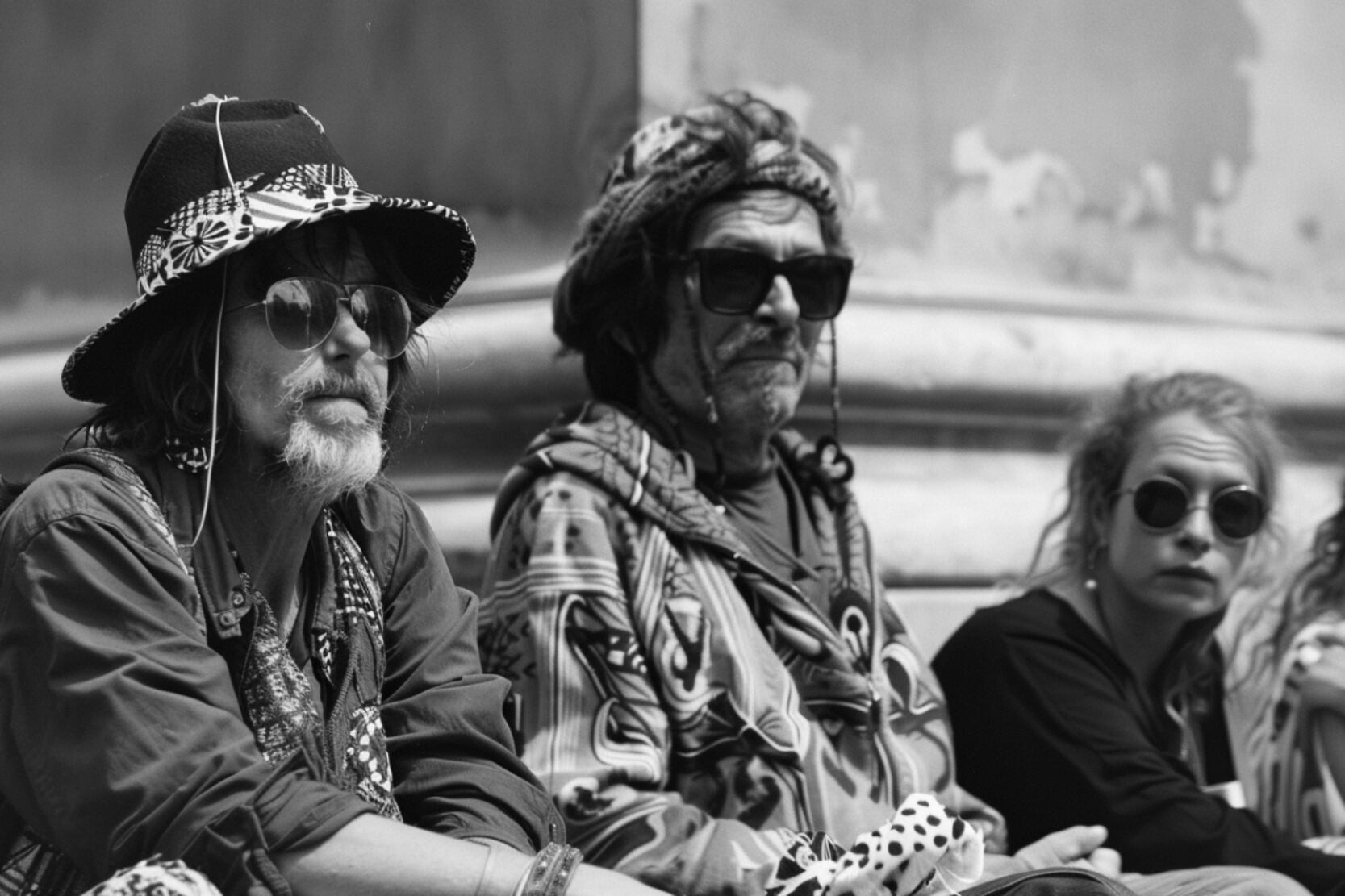
Are Subcultures Really Dead?
The Enigma of Subcultures
Just imagine a dark room, posters of the legendary groups along the walls, and in the corner - the turntable, covered with dust and having long-lived days. A teenager, curious; the cover of some album of his beloved punk rock band, found in the attic, probably long-forgotten. He lowers the needle, and raw music punches out at him—brash and full of life, the immediate antithesis to some glossy tune on today's charts. This is his epiphany. This moment of discovery is a new door into this world, once teeming with subcultures; each had its anthem, fashion, and ethos.
But, as our hero wades in further, to what avail? In the literal age where everything is just a click away, do these subcultures still inhabit with their old fervor—or have they been engulfed by the digital Charybdis?
The Golden Era of Subcultures
Subcultures were once the beating heart of rebellion, birthplaces of groundbreaking music, fashion, and art. Take the way-back machine to the '60s and '70s, when Hippie—with its tie-dyed buses, peace symbols, and promises of a love-and-flower revolt against the evils of war—were all the rage.
Fast forward to the late '70s and early '80s, the time that punk, with its anarchic spirit, challenged the status quo every chord and ripped jean. They were not just fads; they were lifelines for those feeling like outsiders in mainstream society, offering a sense of belonging and identity. They helped mold not only what personal style is but also shaped personal branding before the word even existed.
The Digital Revolution: A New Frontier for Subcultures
We must first define what a subculture is before delving deep into the impact the digital landscape has on it.
A subculture generally refers to that group of individuals who share certain interests and beliefs that are not in line with those accepted and believed by most of them. Communities that may often develop in reply to social norms, such are characterized by a unique language style of fashion, preference in music, and social practices. In other words, subcultures are not just shared hobbies between people who have similar tastes; they make these people feel as if they had an identity in common and provide them with the sense of belonging that many times mass culture denies them by turning them into outcasts.
Why subcultures matter:
They act as an incubator to cutting-edge, risk-taking innovators who push the envelope of cultural norms. From the flappers of the 1920s to the cybergoths of the 2000s, each subculture has left its own impression on fashion, art, music, one would say even politics. Subculture was all a new era; it all began with the arrival of the internet. The span of the digital world seemed to furnish a safe platform for the nurture of niche communities. No longer is finding a subculture down to accidentally coming across that secret record store or the invitation to the opening of some underground club; it's all literally there to be found by anyone with just the click of a button.
The very access was, however, bringing about its changes and giving certain difficulties. The Internet, being said to be a double-edged sword, makes it easy to find one's tribe while there is a loss and overly rapid commercialization of the symbols of subcultural importance.
That's when the former clear boundaries of subcultures started getting diffused through mixing, juxtaposition, and repackaging of elements intended for mass consumption. The spiked collar of a punk, an emblem of defiance, came to sit on the shelves of fast-fashion outlets stripped of its context and meaning.
Hence follows the question that emerges from the sea of change: has digital technology made subcultures lose what essence they held, or has it just transformed them by bringing forth new ways to express their unique identity and belief? Look to the role of the digital revolution in subcultures, and you find tales of adaptation and resilience. From the lowlands of Reddit forums to the sprawling networks of Tumblr, niche communities are very much alive and interconnected across continents. The digital era has not brought subcultures to their grave but made the environment of their living differently styled to prove the spirit of subculture is not perishable.
The Case for Cultural Homogenization
In a world where it is supposed that global interconnectivity has shortened distances and blurred cultural lines, the fact many are feeling is that this is the dawn of the homogenized global culture.
In this respect, the massive reach of the mainstream media and the commercialization of subcultural symbols have, in fact, diluted the distinctness that originally allowed subcultures to stand out. Therefore, as this simple story goes, branded sneakers, when available to any teenager in Tokyo, will also be available to a teenager in Toronto who would both be listening to the same global hits on Spotify while local and sub-cultural distinctions become increasingly irrelevant through their consumer behavior.
This narrative isn't without its truths. The digital age has truly seen the expansion of the cultural symbols, stripped of their subcultural contexts, repackaged, and sold en masse. What once was a gesture of bold hostility: his leather jacket, her black lipstick, all of that is something you can pull off a shelf of some store now, not signaling allegiance to a counter-culture but some trend in fashion. The idea that subcultures have gone down the drain with all the dissolving into some kind of global sameness destroys the nuance by which cultures change and survive.
True, one could make that argument that the internet has allowed for the sharing of global culture, but in some cases, it has also given way to—or even reinvigorated—subcultures, and in more creative ways.
The Undying Spirit of Subcultures
On the other hand, to the tale of cultural homogenization, the subcultures did not die out in front of the global connections but introduced new mediums and expressions.
The digital landscape is enormous, and subcultures do continue within such vast realms, just not in ways that resound to the conventional.
Take, for instance, the resurgence of vinyl and cassette culture within music subcultures. From there stems the nostalgic yearning for the physical experience of music: The Global Black Wax, an international movement whereby collectors and music lovers converge through finds, trade stories, and even create events—all through social media and various online forums.
This revival draws new focus on the desire not only for a physical connectedness to music but also how subcultures may reappropriate and reinvent their symbols against the mainstream flows of digital consumption. The same subculture has equally been founded with the growth of e-sports, which is previously described with celebrities, lexicons, and fashion.
Very far from the cliche concept of individual gamers, the e-sports community represents the world-scale network of fans and their idols, joining in enormous arenas and online for the celebration of their beloved passion. In this context, this subculture exerted its market influence not only in fashion but in many other more, like the media, which is a very important example of how subcultural identities in the digital age have gained flexibility.
Spotlight on Survivors: Subcultures of the 21st Century
If that doesn't show just how modern subcultures are very much alive and kicking, then let the following example illustrate further: the Zero Waste movement. From being a fringe effort to push against the excesses of consumer culture, it has ballooned into a subculture with worldwide recognition.
This could include followers posting things like how to reduce waste, DIY alternatives for everyday items, and even philosophies on how to live a sustainable life through their blogs, YouTube, and Instagram.
This very movement showed just how the subcultures of today had a tendency to rally around shared values and goals, leveraging digital platforms toward ever-greater exposure and the power to connect like-minded people toward real change within the world.
Conclusion: The Eternal Flame of Subculture
Subcultures are declared dead at the very least, surely. This digital era has changed everything, if not all the landscapes in which subcultures live, then at least lighting, shading, and colors. From it were born new forums for expression, connection, and at times even whole new subcultures. It provided communities with comfort, a place to be rebellious, a crucible where identity could be formed and re-formed.
Subcultures prompt us to rethink diversity of thought, lifestyle, and expression. They throw down a gauntlet for us to look further than the mainstream, question, investigate, and celebrate the many possible ways of living in this world. So next time you come across that small niche community or the revival of what seems like a forgotten subcultural trend from the past, just understand that the subcultural spirit lives on and is well, changing and morphing to fit the times as always.








